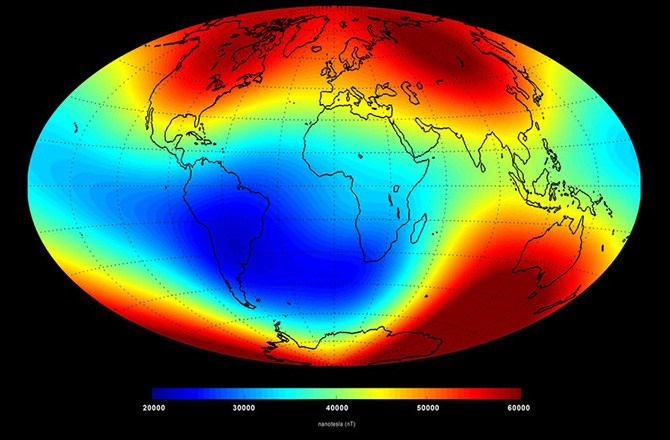
Launched in November 2013, ESA's Swarm mission consists of three 9-meter satellites orbiting the planet at altitudes of 300-530 km (186-330 miles). Their goal is to monitor Earth's dynamic magnetic field, observing its changes over a period of four years.
The data gathered by the Swarm satellites will help scientists better understand how our magnetic field works, how it's influenced by solar activity, and why large parts of it are found to be weakening.
Because the magnetic field is our planet's first line of defense against radiation from both the sun and deep space, understanding what makes it tick is very important.
The first high-definition measurements from Swarm have been made and what's become apparent are weakening regions within the core-generated magnetic field over the western hemisphere, while parts of the southern Indian Ocean show strengthening fields.
Swarm measurements also confirm the march of the magnetic north pole toward Russia.
"These initial results demonstrate the excellent performance of Swarm," said Rune Floberghagen, ESA's Swarm Mission Manager. "With unprecedented resolution, the data also exhibit Swarm's capability to map fine-scale features of the magnetic field."
Watch a video of the Swarm compass findings below:
It's known that Earth's magnetic poles occasionally reverse, a process that takes several thousand years to complete and creates a much more complex and unpredictable - but still protective - field during the interim. And while the weakening observed by Swarm could be a sign of a polarity reversal on the way, it's an event that's probably still thousands of years away.
Meanwhile, missions like Swarm will allow us to better understand the magnetic field we have today, in order to understand what it will do in the future.
Read more about Earth's moving magnetic field here, and find out what would happen during a magnetic reversal here.
Source: ESA



Reader Comments
to our Newsletter